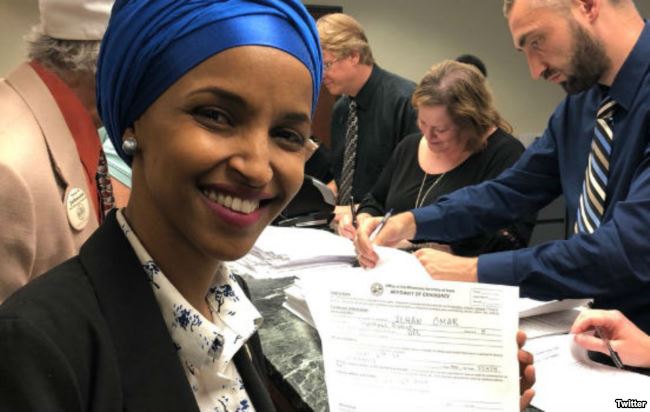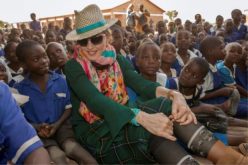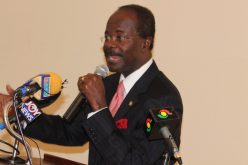NEW YORK — When Colombia-born Catalina Cruz stepped toward the podium in Jackson Heights, Queens, officially launching her campaign for New York State Legislature, a few dozen supporters stood nearby with fluorescent blue, green and red signs — #VoteCatalina, #ElectADreamer.
Like other first-generation American candidates for local, state and nationwide office, Cruz had overcome a series of obstacles to get to that morning in June. Many can relate in her diverse community — including her opponent, a daughter of Dominican immigrants.
“We have many people who understand the struggle of the immigrant, who understand that we do not come here to steal opportunities or take advantage of the system, but to work, to fight,” Cruz told VOA.
“My mom had to take any job — handing out leaflets, making empanadas (meat pies), selling food, babysitting,” she said of her childhood era, a near 13-year-span during which she and her family lived under the radar, undocumented.
Years later, after Cruz completed college, married her high school beau (a U.S. citizen), gained citizenship, and attended law school, she set out to defy the odds again by entering American politics — an arena that has never reflected the diversity of the general population, particularly outside progressive urban centers.
But 2018 may be a tipping point; immigrants are running “everywhere,” says Sayu Bhojwani, founder and president of New American Leaders (NAL), a national non-partisan organization which prepares first and second-generation Americans for political office.
“You’re seeing people run [for office] wherever they are, without the burden of, ‘Oh, well, I’m not in a district that necessarily quote-unquote looks like me,’” Bhojwani said in an interview with VOA.
Barriers
On the one hand, Bhojwani predicts immigrant candidates will face “subtle and not-so-subtle references to (their) backgrounds and affiliations,” like Abdul El-Sayed, who is hoping to become the country’s first Muslim governor in Michigan, and has faced the kind of anti-immigrant rhetoric that is pervasive nationwide.
Yet, despite increasing partisan polarization, Bhojwani says immigrant candidates are beginning to “claim their space” across a range of offices and not just in progressive bubbles like Queens.
Ahead of the 2018 elections in November, NAL has tracked at least 100 foreign-born candidates running for U.S. Congress, where a smaller share of immigrantscurrently holds seats than during either of the country’s 19th and early 20th century waves of European immigration.
And immigrant candidates have been quietly making headway in both local and state elections, where fewer than two percent of 500,000 seats were held in 2015 by either Asian-Americans or Latinos — the two most populous groups of first and second-generation Americans — according to a report by NAL.
Positions like school board and local city council member “are often stepping stones” to higher office for women, candidates of color and immigrant candidates, says Paru Shah, professor of political science at the University of Wisconsin–Milwaukee, whose research examines the characteristics of first and second-generation Americans running for political office.
Would-be candidates all face the difficulties of financing a campaign and finding the time to run. But additionally, immigrant candidates often have their own psychological barriers, according to Shaw.
“Historically it’s a little bit of a chicken and egg situation, where people don’t see themselves in those positions,” Shah told VOA by phone, a situation of “that’s not for me.”
Changing the equation
According to a report by Shah and UCLA PhD candidate Tyler Reny, published in Social Science Quarterly (SSQ), race or foreignness was the most frequently cited barrier among immigrant leader respondents.
“I will have to overcome those who challenge how American I am because I was not born here,” read one recorded statement from the SSQ report.
“I imagine that my ability to lead and my loyalty to the nation would be questioned by the electorate,” read another.
According to Pew Research Center, the share of Asian-American and Hispanic Americans who think of themselves as “typical Americans” approximately doubles from the first-generation (Americans born outside the U.S. or U.S. territories) to 61 percent among the second (US-born with at least one immigrant parent).
For support, Asian-American and Latino candidates for state legislature often rely more heavily on labor unions and community-based groups than their white counterparts, according to NAL data. In return, the groups benefit from better representation.
“There is a lot that you can do to create an environment that is supportive and welcoming,” Bhojwani said. “People are stepping up and saying, ‘Look, I can represent my community and ensure that our schools feel safe and that our cities are welcoming.”
“We are not going to forget how we have lived up this point,” said candidate Catalina Cruz. “Many people might think, ‘Oh, she managed to get her papers and forgot.’ No, this is something you carry with you in your heart and in your blood.”
Laura Sepúlveda, of VOA’s Spanish Service, contributed to this report.
SOURCE: VOA NEWS











